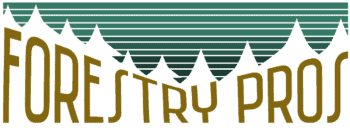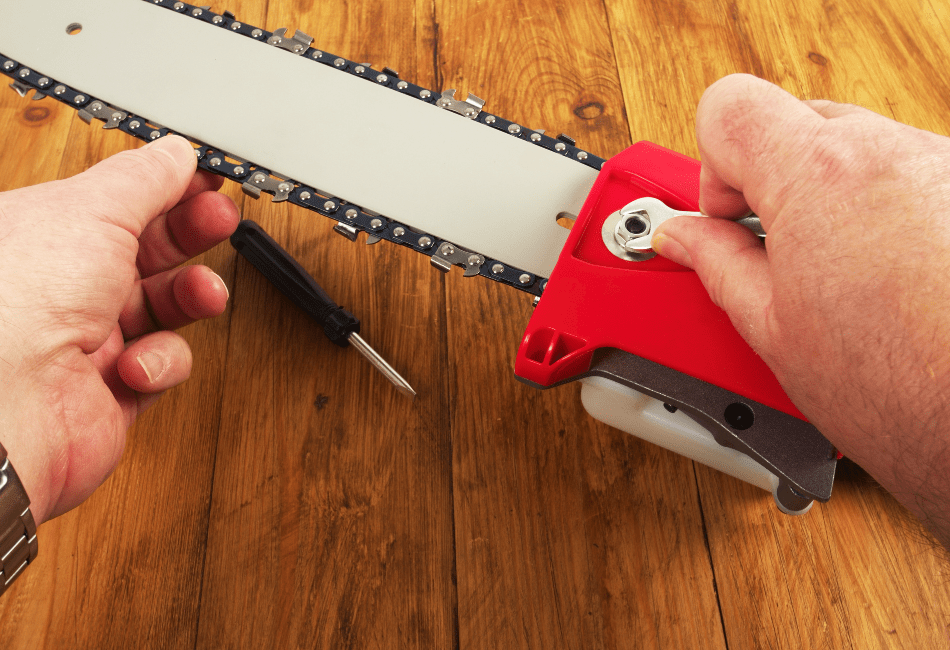- Best Ripping Chainsaw Chains Guide - December 5, 2023
- Longest Pole Saws Guide - October 20, 2022
- Common Stihl 462 Problems & Troubleshooting - October 18, 2022
Chainsaw bars are one of the key parts of a chainsaw. They are in charge of directing the chainsaw chain, which does the actual cutting. However, due to the importance of the bar and the frequency of use, it is one of the chainsaw parts that must be replaced regularly. But do you know what size to get?
You’ll need to measure your chainsaw saw bars to determine what size to get, and I’m here to help.
With my years of experience clearing trees and shrubs on my grandparent’s properties with chainsaws and as a technician, I will help you identify the right bar and chain for your chainsaw and how to measure chainsaw bar using the best-measuring methods available.
Bottom Line Up Front
Measuring a chainsaw bar is essential if you have a regularly used chainsaw and do not want to seek help whenever its bar needs changing or replacing. One thing that remains the same when measuring chainsaw bars for replacement is that not every bar or chain is suitable for every saw.
Parts of the Chainsaw Guide Bar
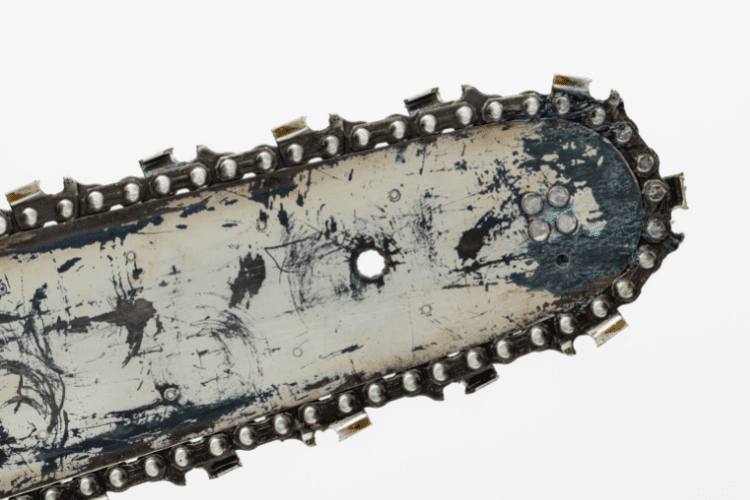
Chainsaw bars have similar characteristics, but their dimensions distinguish them. This is due to the fact that they determine the cutting capacity of the bar.
Below, I’ll list the essential features of a regular chainsaw bar:
- Tail – This is the bar part that enters the chainsaw’s body.
- Mounting slot – this connects the bar to the chainsaw.
- Bar rails – These bar parts enclose the groove along the edge.
- Bar groove – This is the narrow passage where the chain runs along the bar’s edge. It is also known as a bar track.
- Bar tip – this is the nose of the bar where the nose sprocket is attached.
- Nose sprocket – This gear wheel regulates the movement of the chain around the guide bar. Not all bars have a nose sprocket.
- Adjuster hole – this is the home of the pawl that regulates the tension in the chain.
- Oil reservoir – the outlet is the channel through which the bar and Chainsaw chains are lubricated.
Now that you know the major parts of the chainsaw bar, you can quickly locate those parts that are relevant to the process of measuring its dimensions.
Different Types of Chainsaw Bars
There are three basic types of chainsaw bars:
Solid Bars
As you probably guessed by now, They are also known for their strength and longevity. There are two types of solid bars:
- Solid bars with reinforced tip – This is a steel bar from the tip to the nose where it enters the chainsaw. They do not have sprockets and can be used for complex, dirty jobs requiring the nose to be boring directly into the wood. They have top-notch performance and can last for many years.
- Solid bars with replaceable nose sprockets – These bars have sprockets at the nose, which hold the chain securely in place and help it turn smoothly. Although most of the bar is steel, the nose can be removed and replaced. The sprockets provide the oil reservoir outlet that gives ample lubrication to the bar and chain.
Laminated Bars
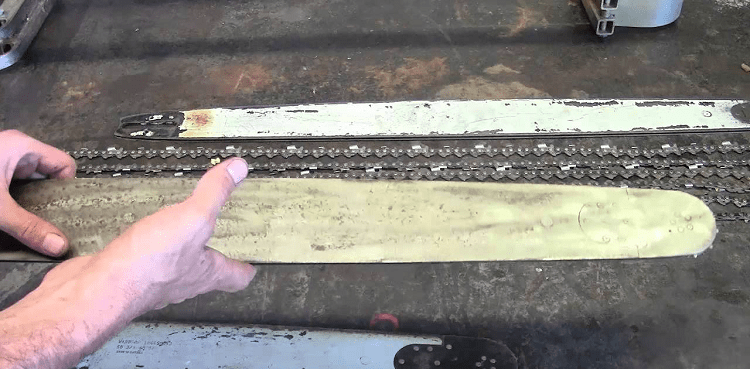
They are made from laminated layers of steel by joining two steel rails with a steel core and a sprocket in their middle. They have higher flexibility and, as I mentioned before, are mostly used by homeowners or gardeners rather than professionals.
Before buying a chainsaw bar, consider its size and power. Do you want a bar for heavy-duty work like felling trees or limbs? Then it would help if you went for a solid bar.
And if you want to clear brush in your garden or make a small piece of furniture, think laminated bars. Determining the size of the bar, you should buy would lead us to discuss ways we can measure them.
The Carving Bars
They are rarely used for regular woodwork or gardening except when the size of the cuts to be made with the chainsaw needs to be precise.
They are unique bars made out of cobalt-chromium alloys; Stellite is designed to resist wearing and is mainly used by wood designers and sculptors. They have a smaller nose radius that reduces the chances of kickbacks.
How to Measure Chainsaw Bar
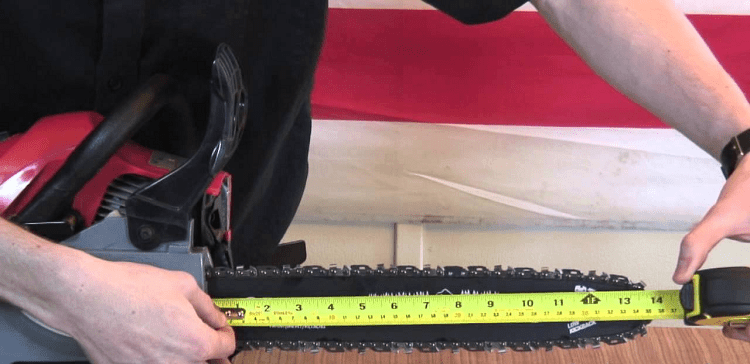
When measuring a chainsaw bar, you will realize that not all bar is suitable for any chainsaw. Larger bars are better suited for powerful saws, such as gas-powered ones because driving a chain around a long bar requires more energy and vice versa for smaller chainsaws. This is why electric saws use 18-inch or shorter bars.
Likewise, chainsaw chains are made to fit specific bar sizes. So, as you consider the best bar for your chainsaw, you’re also considering the best bar for your chains, which is why we’ll also look into ways to measure chainsaw chains.
Step 1 – Measure Called Length
A chainsaw bar’s called length is its usable length. It is also referred to as the cutting length. This is the length of the bar that actually cuts.
To find this length, you will need to follow these steps:
- Remove the bar from the chainsaw’s body by unscrewing the two nuts on the right side. This takes the clutch off the saw.
- Use a tape measure to measure the bar from the tip back to the cutter nearest to the chainsaw’s body.
- Round up this measurement to the nearest even number in inches. For example, a bar that measures 19 1/4 inches will be said to have a called length of 20 inches. Most chainsaw bars’ average reached or cutting length is between 14 to 20 inches.
Step 2 – Measure the Actual Length
This is the full length of the bar that includes the non-cutting length. To get this:
- Measure the bar from one of its ends to the other.
- Round this measurement to the nearest inch.
- The average true length on most chainsaw bars is around 8 to 24 inches.
Step 3 – Measure the Right Chain for Your Chainsaw Bar
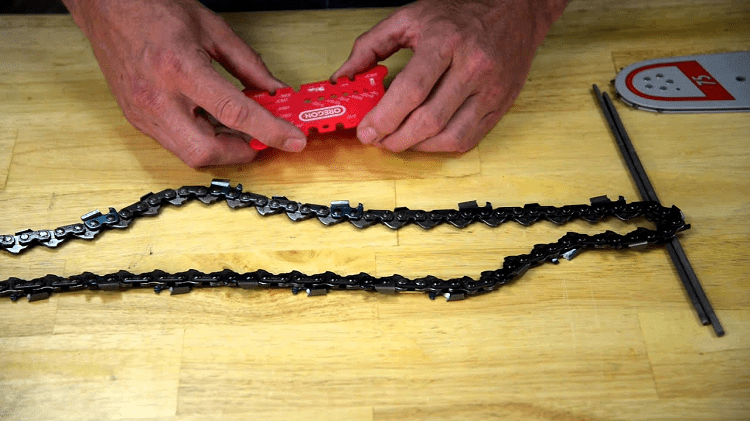
You might consider the existing chain and dimensions when replacing a chainsaw bar. You may even want to replace it altogether so that you have both a bar and chain that is new or relatively new. So how do we measure chainsaw chains?
- You can measure the chain yourself or look on the saw’s parts for inscribed details of the measurements. It is important to note that not all saws have this feature.
- If you want to measure the chain yourself, there are three numbers you must know: the pitch, the number of drive links, and the gauge.
Step 4 – Determine the Pitch
This is the distance between the chain’s drive links.
To get the pitch size:
- Measure the distance between any three consecutive rivets.
- The pitch must be precise, so when using a tape measure to measure the distance between three consecutive rivets, do not start at the first end of the tape but rather at the 1-inch mark for accuracy.
- Divide your measured distance by two. This gives you the chain’s pitch.
The rivets are small, round pegs that join the chain segments, also known as drive links. They also serve as flexible points that permit the chain to bend as it goes around the bar. The most common pitch on replacement chainsaw chains is 3/8 and 0.325 inches.
Step 5 – Number of Chain/Drive Links
To measure the number of drive links or chain segments, you must manually count them. The challenge here is often losing your place during counting, especially for the longer chain, but there is a well-known trick.
- Find a long string as long as the chain to avoid losing your place.
- Tie one end of the string around the first link, then start counting as you continue to wrap the string around each consecutive link till you get to the end. The number of string wraps you have is your drive link number.
For example, the Timber Wolf chain brand has 70 drive links and is often written as “70DL”. This is known as the chain size and can help determine how long a chain needs.
Step 6 – Determine the Gauge
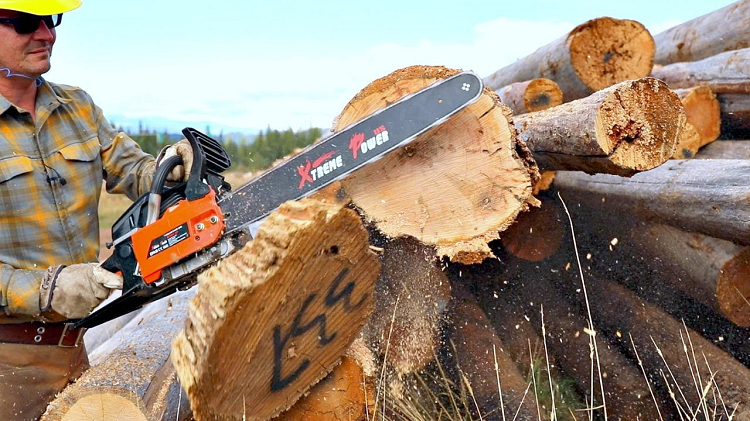
This refers to the thickness of the chain and can be determined by finding the thickness of the chainsaw bar’s groove.
- The standard way to find the gauge is to use coins. You can use either a dime, a penny, or a quarter.
- To reduce the margins of error, it is advisable first to use a flat surface cleaning tool to clean as much dirt or debris out of the bar’s groove to arrive at accurate measurements.
- Try fitting each of these coins into the bar groove on the edge of the bar, and the coin that slides into the groove easily but snugly gives the correct dimension of the groove. It is universally agreed that a dime corresponds to .050 gauge, a penny corresponds to .058 gauge, and a quarter corresponds to .063 gauge.
The pitch, gauge, and a number of drive links are sometimes inscribed on the body of some chainsaws. For example, the Oregon 16-inch replacement bar and S55 AdvanceCut Chainsaw chain combo have a pitch of 3/8 inches, a .050 gauge (size of a dime), and 55 drive links (55DL) inscribed on its body.
Interesting Read: The Best Stihl Chainsaw Bars.
Frequently Asked Questions
Question: Can You Run a Chainsaw without the Bar?
Answer: Yes, it is possible to use a chainsaw without a bar. But I only recommend it for a few minutes, and not at all if you do not need to.
This is because, without the bar, the engine will rev higher, which increases wear and tear and overheat when you use the throttle. Also, while at it, make sure you empty the bar oil tank; otherwise, the oil will spay out of the chainsaw.
Question: What Happens if Chainsaw Runs Out of Bar Oil?
Answer: The chain will overheat and break when you use a chainsaw without bar oil. This can severely damage the chainsaw, necessitating the purchase of a new chain and bar. So make sure to use the appropriate amount of bar oil.
Question: What should You not do with a Chainsaw?
Answer: Well, there are a lot of things you should never do with a chainsaw, but the top of the chart is to NEVER walk around with it running. Please remember always to turn it off or disconnect from the power source.
Also, don’t use a chainsaw for anything except for cutting wood. Lastly, Never cut two branches at once; there is no need to rush, always cut one piece of wood at a time.
Question: How does Chainsaw Bar Oiler Work?
Answer: The first is the throttle, which activates both the motor and the oil pump. As you increase the throttle, a worm drive engages the pump, sending oil through a port that releases onto the bar.
The oil is distributed across the surface of the bar as the chain moves across it, reducing friction and heat generated during cutting.
Question: How Do You Stop a Chainsaw Kickback?
Answer: To avoid contact with the kickback zone, install a safety tip that can cover the nose of the guide bar on the saw. Make sure to remove the tip must when making bore cuts or cutting wood thicker than the guide bar’s length. Finally, wear any required personal protective equipment.
The Bottom Line
Measuring your chainsaw’s bar and chain are as easy as possible, as long as you follow the right steps.
There are two advantages to knowing how to measure your bars: first, you can get the exact replacement for these saw parts when worn out. Secondly, you can get new and improved replacements with the correct dimensions.
For instance, if you used to have a chainsaw with a laminated bar for clearing brush or cutting firewood and you want to start using the same saw for cutting trees or timber, you could switch to a solid bar of the same size as the former.
Or, if you want to build a tree house for your kids, you could get a carving bar that functions very well in woodwork that requires a high level of precision. Or you could also get a carbide-tipped chain that will be useful for heavy jobs.
